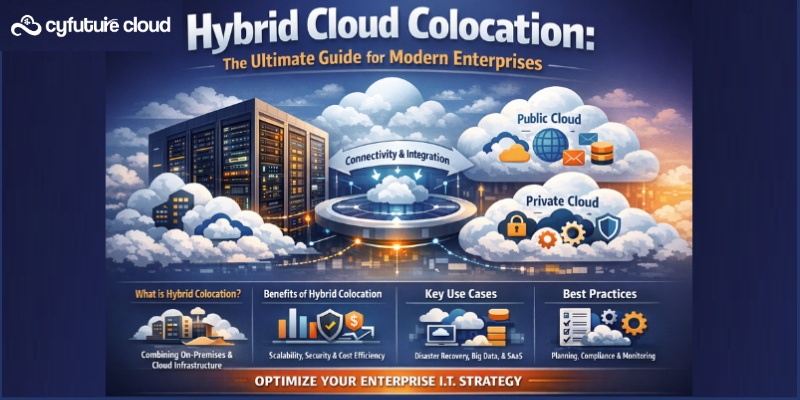Table of Contents
Large Language Models (LLMs) are becoming increasingly popular, with the global LLM market projected to grow from $1,590 million in 2023 to $25,980 million in 2030, a CAGR of 79.80% during the 2023-2030 period.

The recent developments of LLMs have caused a drastic shift in the natural language
processing field. It makes it possible to improve the ability of machines to translate, produce, and respond to human language to a level beyond the previous one. However, organizations seeking to leverage these powerful models face a critical decision: Where should they deploy LLMs? In the Cloud or on-premises? This choice can have consequential implications for:
- Scalability
- Cost
- Control
- Performance
What is LLM?
Large language models (LLMs) are foundation models trained on immense data. This allows them to translate natural language and other types of content to execute various activities. All of them are based on the transformer architectures that have become game-changers in natural language processing (NLP).
Cloud Deployment for LLMs
Cloud deployment refers to hosting and running large language models (LLMs) on remote servers provided by cloud computing platforms. In this approach, the cloud provider handles the computing resources, storage, and management of the LLM infrastructure. Thus allowing users to access and utilize the models on the internet.

Benefits of Cloud Deployment for LLMs
Now, let’s discuss some major benefits of using Large Language Models on the Cloud.
-
Scalability
Cloud platforms provide the flexibility of increasing or decreasing the computing power required in a short period. Thus making it suitable for handling fluctuations in LLM usage.
-
Cost Efficiency
Cloud deployment is based on the pay-per-use model. It enables users to make payments based on the services they use. This can result in lower costs than managing one’s own infrastructure, particularly for smaller initiatives or organizations.
-
Accessibility
The cloud-based LLMs can be used from any location with internet connectivity. Thus enabling collaboration and flexibility for distributed teams.
-
Maintenance
Cloud providers handle the underlying infrastructure’s maintenance, updates, and security patches. Thus relieving the burden on the user.
Drawbacks of Cloud Deployment for LLMs
Although deploying LLM on the Cloud comes with several benefits, however, it is also not without some drawbacks:
-
Security Concerns
LLMs in a multi-tenant cloud environment may introduce security issues and privacy concerns. Confidential information is likely to be processed on common hardware.
-
Dependence on Internet Connectivity
Cloud-based LLMs require stable and reliable internet connectivity to function. Outages or disruptions in internet access can impact the availability and performance of the models.
On-premises deployment for LLMs
On-premises means that large language models (LLMs) are provisioned on computing assets that are owned and managed by the organization not on the cloud. In this approach, the association’s internal IT department is responsible for:
- Acquiring
- Installing
- Managing the LLM infrastructure.
Benefits of On-Premises Deployment for LLMs
Here are some of the reasons why one might need to host their Large Language Models on-premises:
-
Control and Customization
On-premises deployment means that organizations fully control the hardware and software settings. They can change the environment to suit their needs and wants.
-
Security
On-premises deployment can offer more data security and control since the LLM infrastructure and data are stored in the organization’s data centers, especially in cases where the information is sensitive or proprietary.
-
Performance
On-premises delivery can be advantageous in terms of latency and performance. The models are not subject to network latency or bandwidth constraints associated with cloud-based access.
Drawbacks of On-Premises Deployment for LLMs
Now let us discuss some of the drawbacks that one can encounter when implementing LLMs on-premises
-
Cost
On-premises deployment usually requires a large initial capital outlay on:
- Hardware
- Software
- IT Infrastructure
- Ongoing maintenance
- Operational costs
-
Scalability
Scaling the on-premises infrastructure to meet fluctuating demands for LLM usage can be more challenging and time-consuming than cloud-based deployments’ elastic scaling capabilities.
-
Maintenance
Organizations deploying LLMs on-premises must maintain a dedicated IT team to handle tasks such as:
- Hardware and software updates
- Security patches
- System monitoring
It can be resource-intensive.
Key Factors to Consider Before Deploying LLM
Is it more appropriate to launch the LLM on the Cloud or on-premise? The response to this question will depend on several factors.
-
Cost Analysis
In light of recent research, the total cost of ownership (TCO) investigation reveals that cloud-based deployment of LLMs is approximately 20% cheaper than on-premise deployment. It also means that the Cloud is more affordable for large-scale usage as it is based on the pay-per-use model, whereas the on-premises deployment requires massive investments in the hardware and IT equipment.
-
Scalability Needs
The cloud has greater flexibility, and organizations can adapt easily by increasing or decreasing the required computing facilities. This is important because it shows that LLMs can be adjusted depending on the needs of the students. However, scaling on-premises infrastructure can be difficult and takes time compared to cloud computing.
-
Security Requirements
On-premises also offer increased data security and customization since the data is stored in company-owned data centers. However, cloud providers also have strong security solutions and compliance standards. The choice depends on the type of security and compliance that an organization needs for its operations.
-
Performance Requirements
On-premises deployment can offer lower latency and higher performance, as LLMs are not subject to network latency or bandwidth constraints associated with cloud-based access. This can be important for real-time applications that require immediate responses.
-
Maintenance and Support
The infrastructure management is shared with the cloud providers responsible for the:
- Updates
- Security patches
- Other management issues
On the other hand, on-premise deployment involves the installation of the infrastructure within the company’s physical premises. This means that there is a need for qualified IT personnel to oversee the infrastructure. It can be time-consuming and expensive.
The Verdict
Based on the analysis of the key factors, the decision on the optimal approach to deploying large language models (LLMs) is as follows:
For most organizations, cloud deployment is the recommended choice. The major benefits of the Cloud include low cost, flexibility, openness, and low overheads, which allow for covering most LLM use cases.
It has a pay-as-you-go structure, coupled with its ability to scale up or down, making it easy for organizations to manage with demand. Thus, it is more cost-effective than the huge capital investment needed for on-premise deployment. Also, the cloud providers are responsible for maintaining the physical layer. Hence, it reduces the burden on the organization’s IT department and lets it concentrate on other key projects.
However, there are specific scenarios where on-premises deployment may be the better choice:
-
Stringent Security and Compliance Requirements
Some organizations, such as those that handle highly sensitive information or are regulated, may prefer on-premise deployment. Thus offering greater control and security over the infrastructure and data.
-
Mission-critical, Real-Time Applications
Applications that require immediate, low-latency responses may benefit from the performance advantages of on-premises LLM deployment. For instance, in the financial or industrial sectors.
-
Mature IT Infrastructure and Expertise
Organizations with a strong on-premise IT infrastructure and human resources in IT may find it cheaper and easier to manage LLMs. In these cases, the enhanced control, security, and performance of the on-premise deployment may overshadow the benefits of the Cloud. The trade-offs of each option should be considered carefully to arrive at the most appropriate decision.
To Sum it Up!

In conclusion, the decision to use cloud or on-premises for LLMs should be made after analyzing the organization’s requirements and goals:
- Requirements
- Constraints
- Long-term strategic goals
In this way, an organization can make the right decision by analyzing the critical aspects. It will ensure the optimal deployment of their large language models.
If you are interested in a highly available and flexible cloud deployment solution for your large language models, you can turn to CyFuture Cloud. Being a leading cloud service provider, we have numerous cloud solutions that will assist you in optimizing the use of your LLMs.
Recent Post
Send this to a friend

 Server
Colocation
Server
Colocation CDN
Network
CDN
Network Linux
Cloud Hosting
Linux
Cloud Hosting Kubernetes
Kubernetes Pricing
Calculator
Pricing
Calculator
 Power
Power
 Utilities
Utilities VMware
Private Cloud
VMware
Private Cloud VMware
on AWS
VMware
on AWS VMware
on Azure
VMware
on Azure Service
Level Agreement
Service
Level Agreement 



















